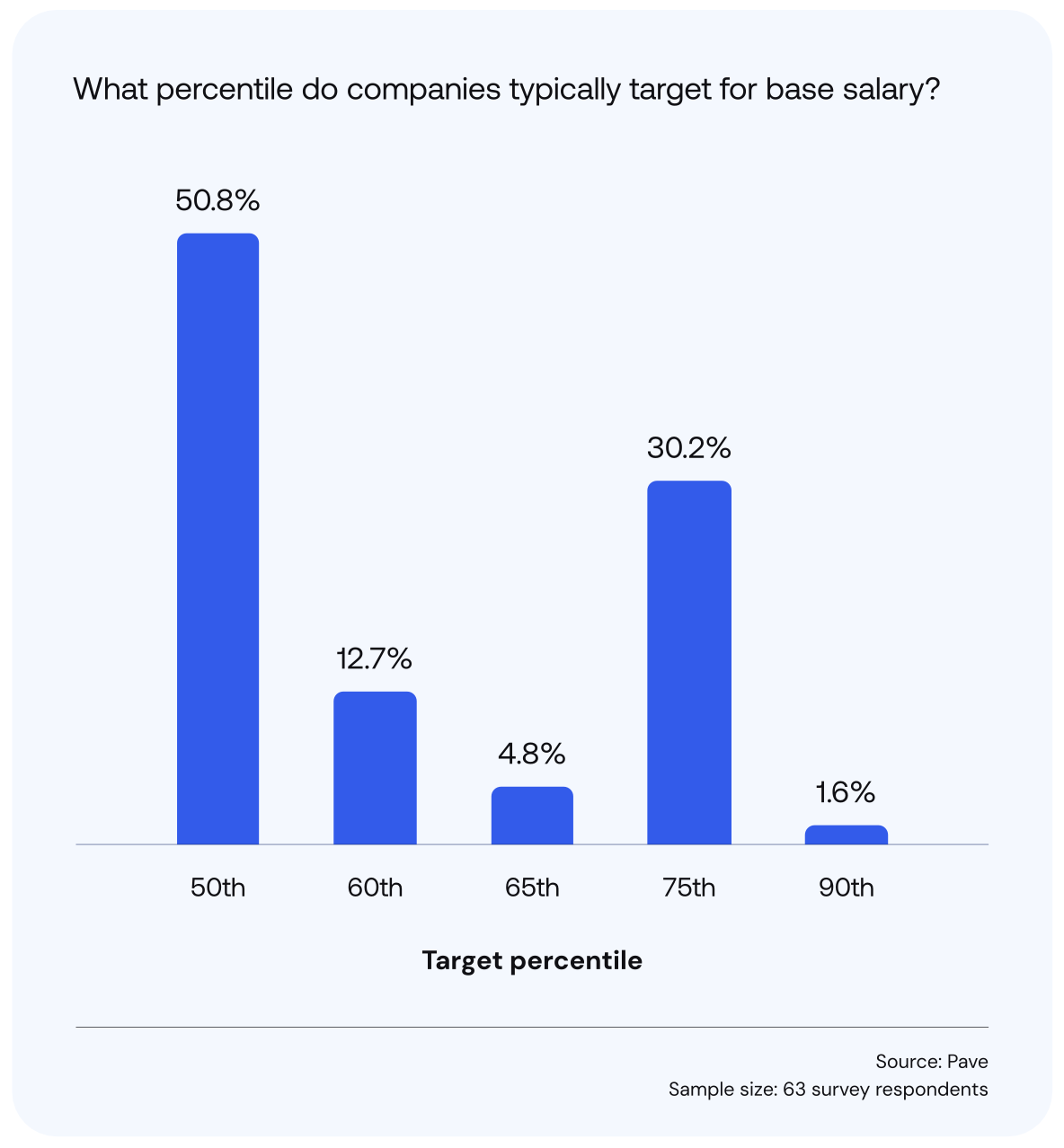Pay and benefits are the key pillars of a comprehensive total rewards strategy. With today’s unpredictable economic climate putting budgets under pressure, compensation leaders must look at the full picture to determine whether they’re:
- Spending too much or too little on employees’ total compensation
- Thinking holistically about benefits, equity, and salaries
- Paying competitively to attract and retain top-tier talent
Pave partnered with the modern insurance brokerage Newfront to bring you in-depth insights on the state of total rewards today. We analyzed data from Pave’s real-time dataset of 8,000+ companies—like Atlassian, Databricks, and Dropbox—and Newfront’s benefits data from over 1,400 leading clients to uncover compensation and benefits trends.
Here are three of our top takeaways from the Total Rewards Report: The True Cost of Hiring in 2025.
Want to learn more? Download the report
1. Competitive Organizations Target the Top of the Market
Compensation and total rewards leaders are under immense pressure to maximize organizational efficiency. At the same time, every company still wants to hire and retain the best and brightest—which typically involves competing with the top of the market.
In a recent Pave pulse survey, every participating company indicated they target base salary at the 50th percentile of the market or higher. In fact, 30.2% of respondents said they target the 75th percentile.

Of course, every employee is not paid at these levels. But for benchmarking purposes, it’s clear that companies are most interested in understanding practices at the middle of the market and above. For this reason, the compensation data from Pave’s real-time compensation dataset throughout the report focuses on the top half of the market.
2. Equity Grants Vary More Than Base Salary
The report dives into cash compensation benchmarks for base salary and variable pay across several dimensions, and the findings show distribution patterns for base salary tend to be consistent and evenly distributed around the 50th percentile of the market. When it comes to employee equity however, the numbers tell a very different story.
To illustrate, let’s look at around 5,000 mid-career software engineers between the 10th and 90th percentile in Pave’s dataset. The distribution of base salary is very even:
- Employees in the 10th percentile receive 27% less cash than the median
- Employees in the 90th percentile receive 27% more cash than the median
But looking at new hire equity grants, the spread is drastic:
- Employees in the 10th percentile receive 73% less equity than the median
- Employees in the 90th percentile receive 248% more equity than the median

Equity program design varies widely from business to business, so these inconsistent equity findings are not entirely surprising. Some organizations grant equity to all employees, while others implement a targeted approach to equity participation, taking factors like level, region, location, and job function into account.
The bottom line? Equity varies much more than cash, so organizations should consider how they can best maximize their equity spend as part of total compensation.
3. Core Benefits Cost 10-15% of an Employee’s Salary
Employee benefits costs are a crucial consideration when building your total rewards strategy. Benefits are a significant part of an employee’s total compensation, impacting hiring and retention.
According to Newfront’s data, medical, dental, vision, and ancillary benefits costs range from 10-15% of an employee’s salary.

Here are three core benefits trends we’re seeing this year:
- Medical insurance continues the largest benefit expense, with most organizations in Newfront’s dataset spending about $14,000 to $17,000 per employee per year
- Most employers cover dental and vision benefits for employees, since plans tend to have little cost variation and low utilization
- Benefit spend tends to be fairly consistent, regardless of company size
{{mid-cta}}
Manage Employee Spend Intelligently
Employee compensation is the largest line item on a company’s budget, so it’s critical to get it right. Companies with more than 100 employees spend an estimated median of $20M on cash and equity annually—and that number skyrockets to $2.1B for organizations with over 10,000 employees.
In a time of economic instability, compensation leaders must think critically about total compensation, including both pay and benefits. Is your total rewards strategy ready?
Get your copy of the report to dive into the details. You’ll uncover valuable insights into the state of pay and benefits today.
Pave is a world-class team committed to unlocking a labor market built on trust. Our mission is to build confidence in every compensation decision.




.jpg)
.jpg)

